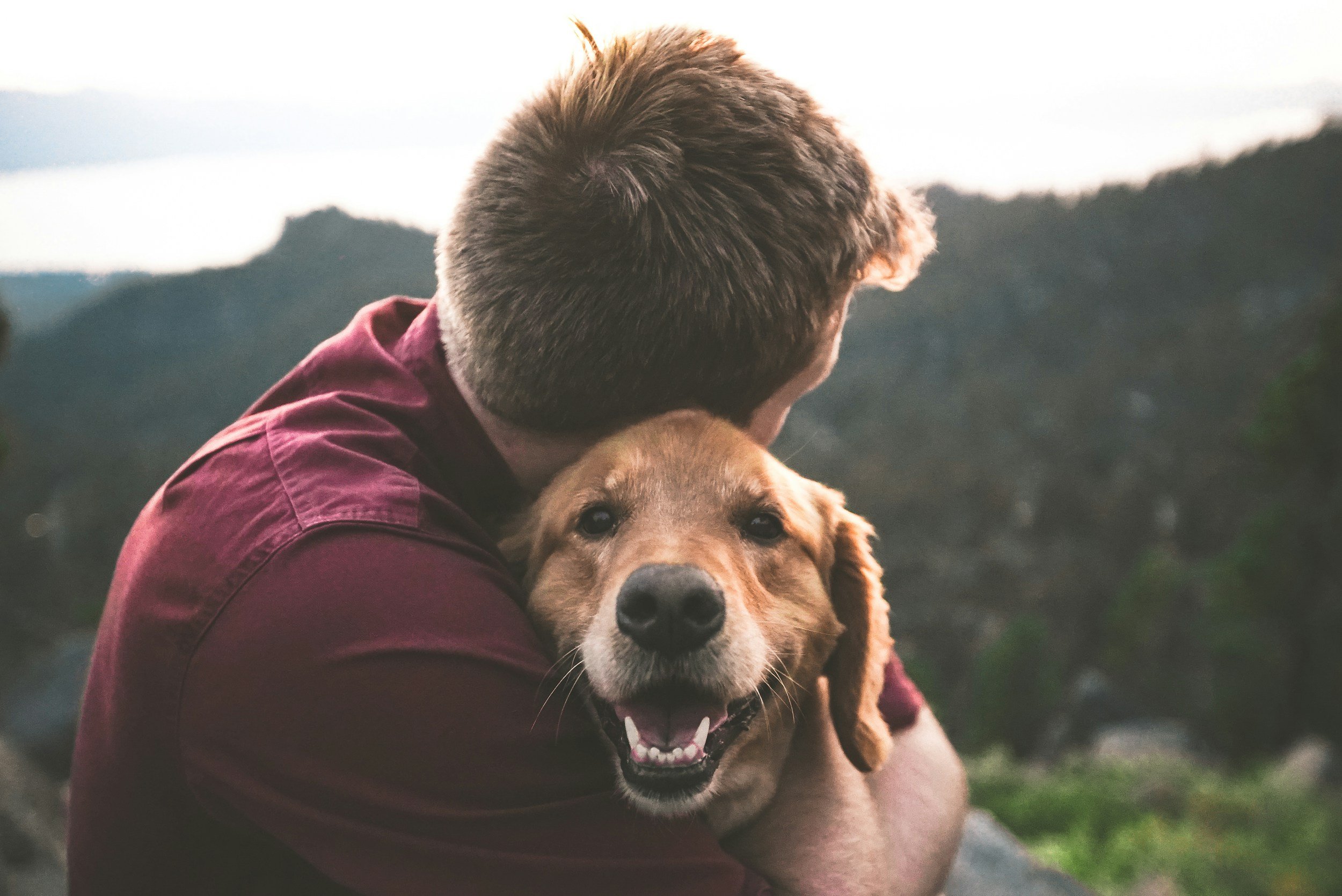
Supporting Children and Family Members Through Pet Loss
Talking to Children About Pet Loss":
Children process loss differently depending on their age and development. Use clear, honest language — avoid euphemisms like “put to sleep,” which can confuse or frighten young kids (National Alliance for Children’s Grief, 2021). Instead, explain in simple terms that their pet was very sick or old and has died. Encourage children to express their feelings through drawing, stories, or sharing memories. Validate their grief by letting them see yours, too (Schonfeld & Quackenbush, 2009).

Preparing for the Goodbye – Creating a Gentle Transition
Creating a calm, comforting space can make a meaningful difference. Consider playing soothing music, lighting a candle, or wrapping your pet in a favorite blanket. Invite close family or friends to say goodbye, if it feels right. Even young children can participate in age-appropriate ways, like drawing a picture or writing a note (McClain, 2021).

The Power of Space in Community Healing (part 6 of 6)
Stewardship of life extends beyond our relationships with animals—it includes our responsibility to the planet. Traditional cremation releases carbon emissions and particulate matter, contributing to environmental degradation (Herring, 2020). Aquamation, an eco-conscious alternative, aligns with the values of pet owners who seek a final act of care that respects both their beloved companions and the earth. As awareness grows, communities that embrace aquamation set new standards for sustainable aftercare.

Beyond Four Walls: Extending Support Through Aftercare (part 5 of 6)
Environmental psychologist Kaplan (1995) suggests that restorative environments—places that encourage reflection and emotional renewal—extend beyond structured spaces into nature and personal rituals. This idea informs our approach at Eternal Tides, where we encourage families to create their own remembrance practices, whether by scattering “cremains” (ashes) in a meaningful location, planting a memorial garden, or crafting personal tributes. These acts transform grief into an ongoing relationship with memory.

How Space Supports Grief Processing (part 4 of 6)
According to color psychology, different hues evoke different emotional responses. Soft greens, blues, and yellows, for example, have been shown to create a calming effect, reduce stress, and promote emotional healing (Elliot & Maier, 2014). While different hues of colors create different feelings from different audiences, often influenced by context and culture, one can often come to agreement with others about shared interpretations of colors

The Role of Space in Remembrance (part 3 of 6)
The role of space in remembrance is not just about location but about intention. As Yi-Fu Tuan (1977) noted, a place becomes meaningful when infused with experience. That is why our Memorial Space is more than a room—it is a sanctuary where pet owners can pause, reflect, and celebrate a lifetime of companionship.

Creating a Healing Environment: Intention and Purpose (Part 2 of 6)
At Eternal Tides, our Memorial Space and Comfort Room are more than locations for final goodbyes. They are intentionally designed spaces that support grieving pet owners, transforming loss into remembrance. Research in environmental psychology suggests that healing spaces incorporate natural elements, gentle lighting, and thoughtful design to promote emotional well-being.

Beyond a Place: How Space Shapes the Grieving Process (Part 1 of 6)
Grief is a deeply personal journey, shaped by emotion, memory, and environment. When we lose a beloved pet, the spaces where we say goodbye, reflect, and heal can profoundly impact our ability to process loss. Inspired by the work of philosopher Michel de Certeau, who distinguished between "place" (a physical location) and "space" (a meaningful environment shaped by movement and interaction), we understand that grief does not simply unfold in a place—it transforms within a space.

Love and Legacy: Honoring Pets with Meaningful Decisions
For many of us, pets are more than companions—they are family. When their time with us comes to an end, the choices we make for their aftercare not only reflect our love but also leave a legacy of how we honor the bond we shared. In Fargo, North Dakota, where pet owners seek compassionate solutions, these decisions are an opportunity to merge love with meaningful action.
Flame-based “traditional” pet cremation is a familiar choice, offering closure through memorialization. Yet, as more people explore environmentally conscious options, aquamation is emerging as a thoughtful alternative. This water-based process mirrors the natural decomposition of life, using far less energy and producing minimal emissions compared to cremation. According to research by Bartley et al. (2020), aquamation consumes only one-tenth the energy of fire-based cremation, reducing the environmental impact while offering the same opportunity to honor your pet’s memory.

Creating a Legacy for Your Pet: Ideas for Meaningful Memorials
When a beloved pet passes, creating a meaningful memorial can help preserve their memory and bring comfort to those who loved them. Memorials honor the bond you shared and provide a way to celebrate the joy your pet brought into your life. Whether through physical keepsakes, ceremonies, or environmental contributions, there are many ways to create a lasting legacy.

Eco-Friendly Urns: Honoring Your Loved One While Caring for the Planet
One of the primary benefits of eco-friendly urns is the use of sustainable materials. Unlike traditional urns made from metal, wood, or ceramic, many eco-friendly urns are crafted from biodegradable substances like bamboo, cornstarch, recycled paper, or even natural salts

Choosing the Right Urn: Material, Style, and Personalization
When selecting an urn, the material is one of the most important factors to consider. Traditional urns are often made from materials like wood, metal, or ceramic, but for those concerned about the environment, there are greener options available. Biodegradable urns, made from sustainable materials like bamboo, recycled paper, or salt, are designed to break down naturally over time, reducing their environmental footprint (Funeral Consumer Alliance, 2018). These eco-friendly urns are ideal for water burials or natural burial sites, as they return the remains to the earth without harming the ecosystem.

A Brief History of Urns: From Ancient Traditions to Modern Memorials
One of the earliest known uses of urns dates back to the Bronze Age (3300-1200 BCE), where archaeological findings reveal that people from ancient China, Greece, and Rome used urns to hold cremated remains. In ancient Greece, urns, or lekythos, were used in funeral rites and often adorned with depictions of mourning scenes or mythological stories
